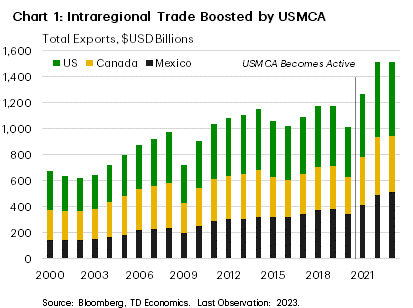Global Trade Uncertainty as Trump’s Tariff Threats Approach
As the time for the re-elected U.S. president, Donald Trump, to assume office on January 20th, 2025, draws near, he prepares to implement the tariffs he promised during his campaign. These tariffs, aimed at international market arrangements such as imports, have sparked uncertainty and concern among businesses and governments worldwide. Industries are bracing for potential economic consequences and disruptions due to the anticipated policies.
One of Trump’s proposed tariffs includes a 25% levy on Canadian imports. This has raised concerns about inflationary pressures and economic instability. According to Reuters, such tariffs function as external supply shocks, which traditional monetary policy may struggle to counteract. This situation presents challenges for central banks and economies that are heavily integrated into global supply chains, especially in emerging markets (Financial Times, 2024).
Countries like Canada are already preparing for potential trade conflicts. The Wall Street Journal reports that Canadian officials are considering retaliatory tariffs while exploring ways to mitigate tensions, such as increasing purchases of U.S. products like military equipment. Meanwhile, China has accelerated exports in anticipation of the new administration’s policies. According to The Times, Chinese exports grew by 10.7% year-on-year in December, driven by manufacturers rushing to ship goods before tariffs take effect and benefiting from a weaker yuan.
The impact of these tariffs will be felt across industries, particularly those in sectors like automotive, steel, aluminum, and pharmaceuticals. Companies with global operations may need to reassess their supply chains to reduce exposure to risks. Consumers are also likely to feel the effects of the tariffs. While policymakers argue that foreign exporters bear the consequences of import taxes, BBC News points out that higher tariffs typically translate into increased retail prices for domestic consumers.
“A survey by the University of Chicago in September 2024 asked a group of respected economists whether they agreed with the statement that "imposing tariffs results in a substantial portion of the tariffs being borne by consumers of the country that enacts the tariffs, through price increases". Only 2% disagreed.” (BBC News, 2024).
The U.S.-China trade war in 2018-2019 provides a precedent for the global trade actions we may see again. During that time, businesses had to adapt by building factories outside of China, rerouting goods, and absorbing higher costs. Similar patterns are emerging now, with countries like Vietnam and Mexico benefiting as businesses reduce their reliance on Chinese suppliers. For example, Malaysia’s Top Glove Corp saw its U.S. sales surge by 120%, as buyers moved away from Chinese producers facing tariffs (Bloomberg, 2024).
As the day for Trump to assume the presidency approaches, companies must remain vigilant and prepared for the upcoming measures that will be implemented in this new phase of his administration. The potential effects of these new policies require a thorough understanding of the emerging risks and opportunities. Businesses can take actions such as monitoring key metrics, diversifying supply chains, and engaging in scenario planning to mitigate the disruptions caused by trade tariffs.
Global trade, valued recently at $24 trillion, remains in a precarious state as we await further details on the new administration’s policies. The outcomes of these measures could reshape the future of international trade relationships over the next four years.
References
Bloomberg. (2024). Trade on Edge as Trump Tariffs Around Corner: Bloomberg Tracker. Retrieved from https://www.bloomberg.com
BBC News. (2024). Would Donald Trump’s tariffs hurt US consumers? Retrieved from https://www.bbc.com
Reuters. (2024). US tariffs may lead rate setters to fight wrong war. Retrieved from https://www.reuters.com
Wall Street Journal. (2024). Canada Knows Trump Would Win a Trade Fight. It Is Preparing to Retaliate Anyway. Retrieved from https>//www.wsj.com
China exports beat forecasts as Donald Trump’s tariffs loom. Retrieved from https://www.thetimes.com
Financial Times. (2024). Pain is coming for emerging markets from Trump trade war. Retrieved from https://www.ft.com



